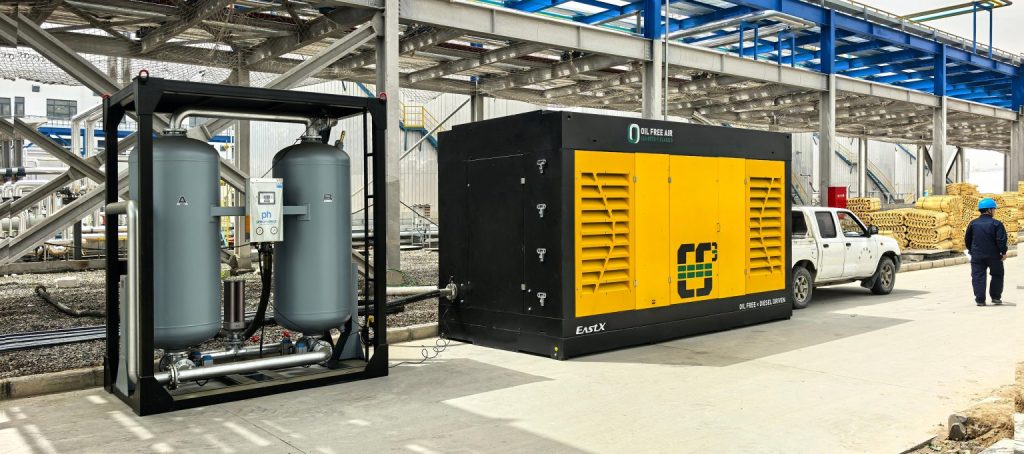Air compressors not only power essential industrial processes, but also generate heat that can be repurposed for energy savings. However, there is another byproduct of compressed air generation: noise.
The sound we perceive—and its intensity—depends on our proximity to the noise source and factors within the surrounding space. In indoor settings, room size, surface materials, and the presence of furniture all affect how sound waves are absorbed or reflected. For instance, a carpeted room is typically quieter than one with tile or hardwood flooring due to better sound absorption.
Why Noise Reduction Matters
Sound levels are measured in decibels (dB). For context, here are some familiar noise benchmarks:
- Rustling leaves: 30 dB
- Normal conversation: 60 dB
- Vacuum cleaner: 75 dB
- Motorcycle: 100 dB
- Chainsaw: 115 dB
- Stadium crowd: 125 dB
- Gunfire (at 100 ft): 140 dB
Compressors usually operate between 40–92 dB. Any noise above 85 dB is considered harmful to human hearing, making noise reduction not only a matter of comfort but also occupational health and safety.
How to Reduce Compressor and System Noise?
Compressor room dimensions, machine positioning, surface materials, and vibration from piping can all affect sound propagation. Here are four proven methods to reduce noise:
1. Sound Insulation (Barriers)
Install physical barriers between the noise source and nearby workers or equipment. Larger and denser barriers are more effective at blocking sound transmission.
2. Sound Absorption
Apply porous absorbent materials—such as open-cell foam or heavy acoustic fabrics—around the compressor or on the walls to reduce reverberation and echoes.
3. Vibration Isolation
Use rubber pads, cork mounts, or steel springs to prevent vibrations from traveling through floors or structures. This reduces secondary noise generated by mechanical resonance.
4. Damping
Add elastic damping layers to machine surfaces to reduce vibration amplitude. The larger and more efficient the damping layer, the better the vibration control—and it’s often cost-effective.
Additional Tips
- Many modern compressors come with integrated sound enclosures or silencers—consider them during equipment selection.
- Isolate piping from structural elements using anti-vibration clamps to minimize resonant noise.
- Incorporate noise-reduction strategies during design or retrofit phases for maximum cost-effectiveness and efficiency.
Implementing smart noise control solutions ensures a safer, healthier, and more pleasant work environment while protecting employee hearing.


